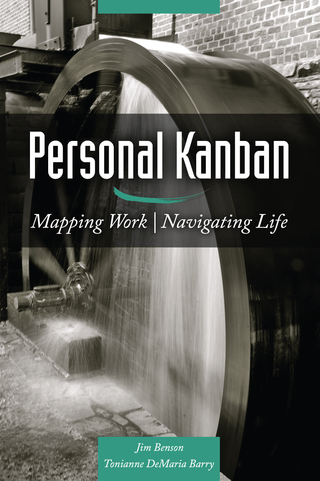Personal Kanban Book Review
Date Published: 09 March 2012

Not long ago, while preparing my Kanban Fundamentals video training class for Pluralsight, I read Personal Kanban, by Jim Benson and Tonianne DeMaria Barry. If you’re new to the concept of kanban, this book is a good place to get started (along with my course, which is about 90 minutes long, and shorter if you speed it up). I read the kindle edition of Personal Kanban, even though I don’t own a Kindle. It allowed me to read it at my PC, on my iPad, and on my Windows Phone, depending on where I found the time. Whether you pick up the book for $10 electronically or $25 on paper, it’s very reasonably priced and is a fairly quick read at just 216 pages (paper).
What’s To Like
I really enjoyed the book’s narrative and simple, straightforward style. The authors do a great job of presenting the material in a very approachable manner. The use of cartoons and photographs help to explain important points. I also liked that the book jumps into the material in the first chapter, explaining why Personal Kanban is needed, what the rules are, and why they work. By the second chapter, you’re already creating your own personal kanban using easily available and inexpensive materials.
The book’s system has only two rules: Visualize Your Work and Limit Work in Progress (or Process). These two rules drive the process, and the details of how an particular system is implemented can vary based on what works for the individual. The rest of the book explains how these rules help to maximize flow and effectiveness over utilization and efficiency.
The authors also have a blog and continue to post valuable material related to the book’s topic at PersonalKanban.com.
What to Improve
One reviewer on Amazon describes the book as “A good idea sold in too many pages.” I can relate somewhat to this reviewer, as the book, even at just over 200 pages, is at its core describing a very simple idea with a very simple implementation. This is both its blessing and its curse. The authors do not waste the reader’s time with fluff, in my opinion, but I certainly agree that the greatest value in the book comes from the first couple of chapters and the rest is supporting material.
In the kindle edition, at least, some of the illustrations/cartoons are not terribly high resolution, making some of the small text difficult to make out. The main points of the cartoons are completely legible, though, so this is a very minor concern, and probably out of the authors’ control.
Summary
I’ve reviewed the book with four stars on Amazon. I found it to be valuable and integrated many of its ideas into my course. If you’re looking to learn more about how to use kanban and lean concepts in software development, this book can be a good primer. Once you’ve finished it, I would recommend you read Kanban, Lean Software Development (related post), Scrumban (review), and finally Principles of Product Development Flow, in order from least to most advanced. My Kanban Fundamentals course is meant to cover the basics described in Personal Kanban and Kanban, primarily. I hope to produce a follow-up course that gets into more advanced lean/kanban principles and practices described in the latter titles and my own experience.
Category - Browse all categories

About Ardalis
Software Architect
Steve is an experienced software architect and trainer, focusing on code quality and Domain-Driven Design with .NET.
